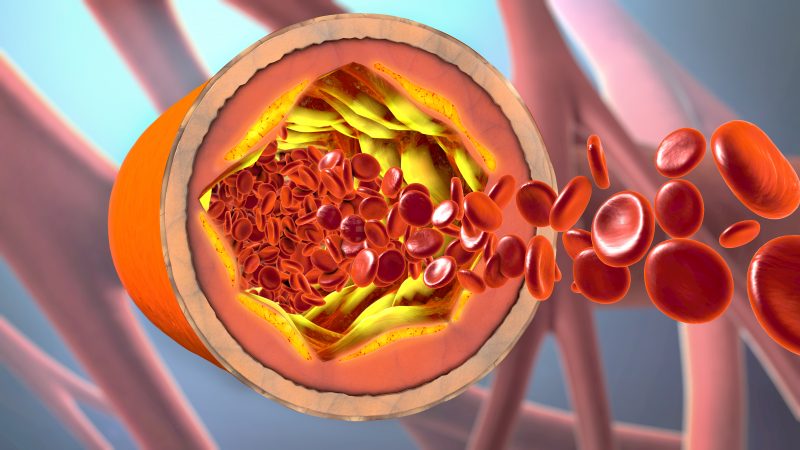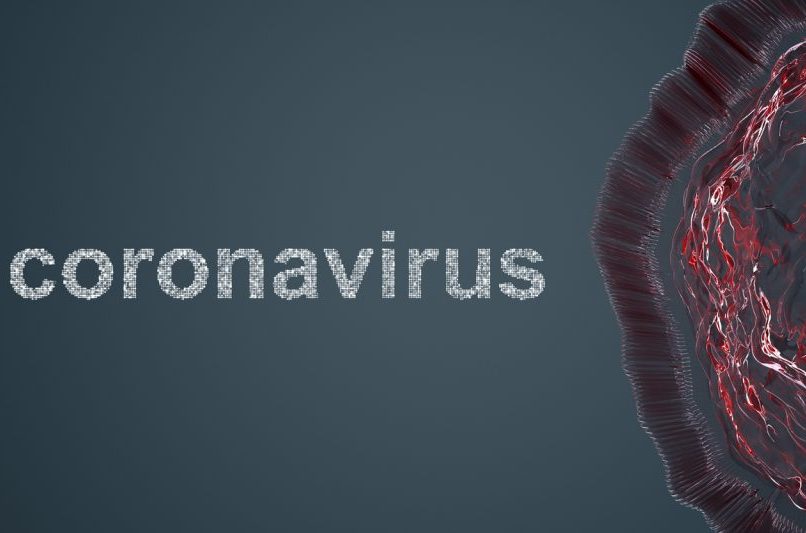Do you know how to tell if a wound is infected?
Every wound has the potential of becoming infected. Once infection sets in it can spread quickly and become increasingly dangerous.
In the modern world it is easy for us to take for granted the easy access to doctors and medicine like antibiotics. But there are many situations in which these luxuries may not be available.
Events such as a natural disaster, terror attack, or economic collapse, can bring the comfort and order of modern society to a halt without warning.
This is why it is important to have practical and actionable knowledge about how to stay healthy and take care of yourself and your family in an emergency situation.
How to Treat a Wound
Whether you are out camping or on a hike, evacuating to escape a natural disaster, or just prone to accidents at home, it is useful to be able to treat wounds and subsequently identify signs of infection.
If you are a loved one are wounded, the first step is to stop the bleeding. Use a clean material such as cloth or gauze and hold pressure on the wound. Hold the pressure for several minutes until the bleeding stops. It may help to elevate the wound.
Wash your hands before inspecting any wound whether it is new or old. If the wound is new gently wash away any particles that may be in the wound or around the wound site.
Sanitize the wound with gentle natural cleaners such as tea tree, calendula, aloe, chamomile, silver oxide, or even raw unfiltered honey.
Use a clean bandage to wrap or cover the wound. Clean regularly twice a day and watch the wound for any noticeable changes or signs of infection.
The following 5 symptoms can indicate an infection of a wound:
1. Inflammation
Swelling and redness is common at the site of a recent wound, however it should lessen with time. If redness or swelling persist or worsen, then an infection is likely. Additionally, be on the lookout for red radiating streaks around a wound. These red streaks are known as lymphangitis and generally indicate an infection that has made it’s way into the lymphatics Heat is another inflammatory sign of infection. As an infection develops, the immune system sends infection-fighting white blood cells to the site of the wound. This inflammatory immune response can cause the wound to feel unusually warm to the touch.
2. Smelly/Greenish Drainage
When examining the drainage coming off of your wound it is important to note the odor and the color. If you observe pus that has a green color or a foul odor, then you are dealing with an infection. However, drainage with a white or yellow hue is actually something called granulation tissue. Granulation tissue is a perfectly normal part of the healing process. Healthy wound drainage can be managed with absorbent cloths and negative pressure therapy.
3. Fever
Fever is one of the more obvious and well-known signs of infection. When you have a fever you may feel slightly nauseous and lose your appetite. A low-grade fever is classified as 100 degrees Fahrenheit or less and may not necessarily indicate infection. However, if your body temperature exceeds 100 degrees then an infection or other illness is likely.
4. Sense of Melancholy
If an infection has spread from the site of the wound your immune system begins to mount a more global defense. This can lead to a general feeling of melancholy or malaise. Feeling unwell is a common sign of a localized systemic infection. This includes a feeling of lethargy and a lack of energy. You might sleep more than usual and not feel capable of engaging in your usual day-to-day activities.
5. Persistent Pain
An initial sensation of pain following a wound is completely normal. However, if the pain lingers or worsens then it is possible that you are dealing with an infection. Pain signals are a way for your body to communicate that something is wrong so they should not be ignored.
Play it Safe
If you or a loved one develop any of these symptoms then it is important to seek medical attention immediately. Antibiotics may be necessary to keep your infection from getting out of control.
For emergency situations when a doctor may not be accessible, it is wise to have natural antibiotics such as oregano oil and tea tree oil on hand.
Take it Seriously
Wound infections are a serious issue. Often, superficial infections can spread very quickly, even overnight. This can be seen in the case of staph infections which are caused by the staphylococcus bacteria. These bacteria are common and can actually be found on everybody’s skin. Normally, they are not problematic. But when they enter a wound and grow out of control they quickly become toxic.
To avoid things taking a turn for the worse, address your symptoms as soon as they arise. If you think you have an infection seek medical attention immediately. Whenever you have a serious wound, make sure to clean it thoroughly and regularly, drink plenty of water, and get adequate rest.
Whether it is an emergency situation or during your day-to-day life, taking wound care seriously can help you prevent infection and may even save your life.
References
https://www.advancedtissue.com/6-signs-you-have-an-infected-wound/
http://www.rd.com/health/wellness/signs-a-cut-or-scrape-is-infected/
http://www.wikihow.com/Check-a-Wound-for-Infection
Check Out More Keto Articles Join Our Keto Group
93 COMMENTS
Comments are closed.


















mostbet kg [url=http://mostbet12038.ru]mostbet kg[/url]
мостбет контакты [url=www.mostbet12040.ru]www.mostbet12040.ru[/url]
Приобрести диплом о высшем образовании поможем. Купить диплом магистра Орёл – [url=http://diplomybox.com/kupit-diplom-magistra-v-orle/]diplomybox.com/kupit-diplom-magistra-v-orle[/url]
где купить дипломы медсестры [url=http://frei-diplom13.ru]где купить дипломы медсестры[/url] .
Проникнитесь духом эмоциональное приключение в цифровом мире. Испытайте эмоции от игровых приключений в ярком игровом портале. Я зашел на платформу по совету коллеги, который обожает азартные развлечения. Я даже представить себе не мог, сколько эмоций подарит мне эта платформа. Когда я начал, система регистрации оказалась выше всяких похвал: интуитивно понятно и никаких раздражающих задержек. Когда я впервые увлекся одним из слотов на портале, я почувствовал прилив вдохновения [url=https://casinokush.cfd]casinokush.cfd[/url] . Когда я получил свой первый выигрыш, я испытал невероятное чувство триумфа и радости. Игры оказались красочными, увлекательными и создающими ощущение настоящего погружения в приключение. Я попробовал игры с реальными дилерами, и это стало для меня настоящим открытием — динамично, вовлекательно и реалистично. Casino подарило мне не только азарт, но и вдохновение, которое теперь сопровождает меня каждый раз, когда я захожу на платформу. Теперь я не только отдыхаю здесь, но и получаю возможность испытать новые игры, новые истории, где каждая победа дарит уникальные эмоции. Если и вы хотите окунуться в мир сюрпризов, побед и радости, начните вашу азартную историю прямо здесь. Ваш путь победителя начинается прямо здесь https://casinocactus.cfd .
[url=https://school.3dn.ru/forum/8-6-52#4874]Узнайте о удовольствие от игр на казино в моменте[/url]
[url=https://ewebtalk.com/showthread.php?tid=59909]Погрузитесь в новые эмоции на казино без лишних ожиданий[/url]
1887_55
Download [url=https://minecraft-download1.com]minecraft apk download v1.17.41 free[/url] and immerse yourself in the exciting world of creativity!
Starting your journey in Minecraft requires you to download the game.
промокод в 1вин казино [url=1win12019.ru]1win12019.ru[/url]
можно купить диплом медсестры [url=www.frei-diplom13.ru/]можно купить диплом медсестры[/url] .
download 918kiss apk [url=www.918kisslama.com/]download 918kiss apk[/url] .
кухни на заказ производство спб [url=https://kuhni-spb-12.ru/]kuhni-spb-12.ru[/url] .
1вин регистрация на официальном сайте [url=https://www.1win5521.ru]https://www.1win5521.ru[/url]
рейтинг сео компаний [url=https://reiting-seo-kompanii.ru/]рейтинг сео компаний[/url] .
aviator bonus game [url=aviator-game-winner.com]aviator-game-winner.com[/url] .
win crash game [url=www.aviator-game-cash.com/]win crash game[/url] .
aviation game [url=www.aviator-game-best.com/]aviation game[/url] .
как потратить бонусы 1вин [url=https://1win5520.ru/]https://1win5520.ru/[/url]
где можно купить диплом медсестры [url=https://www.frei-diplom13.ru]где можно купить диплом медсестры[/url] .
battery aviator game apk [url=https://www.aviator-game-predict.com]https://www.aviator-game-predict.com[/url] .
электрокарнизы для штор купить в москве [url=https://prokarniz36.ru/]prokarniz36.ru[/url] .
In today’s fast-paced world, staying informed about the latest developments both locally and globally is more essential than ever. With a plethora of news outlets competing for attention, it’s important to find a reliable source that provides not just news, but insights, and stories that matter to you. This is where [url=https://www.usatoday.com/]USAtoday.com [/url], a leading online news agency in the USA, stands out. Our commitment to delivering the most current news about the USA and the world makes us a go-to resource for readers who seek to stay ahead of the curve.
Subscribe for Exclusive Content: By subscribing to USAtoday.com, you gain access to exclusive content, newsletters, and updates that keep you ahead of the news cycle.
[url=https://www.usatoday.com/]USAtoday.com [/url] is not just a news website; it’s a dynamic platform that strengthens its readers through timely, accurate, and comprehensive reporting. As we navigate through an ever-changing landscape, our mission remains unwavering: to keep you informed, engaged, and connected. Subscribe to us today and become part of a community that values quality journalism and informed citizenship.
plane game money [url=https://www.aviator-game-deposit.com]https://www.aviator-game-deposit.com[/url] .
электрокарнизы купить в москве [url=http://www.elektrokarnizy77.ru]электрокарнизы купить в москве[/url] .
карнизы для штор купить в москве [url=http://elektrokarniz1.ru/]http://elektrokarniz1.ru/[/url] .
электрокарниз двухрядный [url=http://www.elektrokarniz2.ru]http://www.elektrokarniz2.ru[/url] .
карнизы с электроприводом купить [url=www.provorota.su]www.provorota.su[/url] .
электрокарниз недорого [url=www.elektrokarniz-dlya-shtor15.ru/]www.elektrokarniz-dlya-shtor15.ru/[/url] .
автоматические карнизы для штор [url=https://elektrokarniz98.ru/]автоматические карнизы для штор[/url] .
электрические гардины для штор [url=www.elektrokarniz-dlya-shtor11.ru]www.elektrokarniz-dlya-shtor11.ru[/url] .
карниз для штор электрический [url=www.elektrokarniz495.ru/]карниз для штор электрический[/url] .
автоматические гардины для штор [url=www.elektrokarniz-dlya-shtor499.ru/]www.elektrokarniz-dlya-shtor499.ru/[/url] .
где можно купить диплом медсестры [url=www.frei-diplom13.ru/]где можно купить диплом медсестры[/url] .
электрические рулонные шторы на окна [url=www.rulonnye-shtory-s-elektroprivodom.ru]электрические рулонные шторы на окна[/url] .
мелбет рабочее зеркало [url=http://melbet5010.ru/]мелбет рабочее зеркало[/url]
какие бывают рулонные шторы [url=rulonnye-shtory-s-elektroprivodom499.ru]rulonnye-shtory-s-elektroprivodom499.ru[/url] .
melbet for ios [url=www.melbet5008.ru]www.melbet5008.ru[/url]
рулонные шторы с электроприводом цена [url=https://rulonnye-shtory-s-elektroprivodom177.ru/]рулонные шторы с электроприводом цена[/url] .
РўРѕРјСЃРє
римские шторы с пультом управления [url=https://prokarniz28.ru]https://prokarniz28.ru[/url] .
рулонные шторы на пульте [url=http://www.prokarniz28.ru]http://www.prokarniz28.ru[/url] .
купить медицинский диплом медсестры [url=https://frei-diplom13.ru]купить медицинский диплом медсестры[/url] .
бамбуковые электрожалюзи [url=www.prokarniz23.ru]www.prokarniz23.ru[/url] .
умный дом шторы [url=www.prokarniz23.ru]умный дом шторы[/url] .
каталог seo агентств [url=www.reiting-seo-kompanii.ru/]www.reiting-seo-kompanii.ru/[/url] .
умные шторы с алисой [url=https://prokarniz27.ru/]prokarniz27.ru[/url] .
Thanks you.
https://hop.cx
скачать мелбет зеркало [url=https://melbet5003.ru/]скачать мелбет зеркало[/url]
игровой слот dog house megaways [url=http://wwwpsy.ru]http://wwwpsy.ru[/url] .
автоматические жалюзи [url=https://prokarniz23.ru]автоматические жалюзи[/url] .
pepe bonus melbet [url=https://www.melbetbonusy.ru]https://www.melbetbonusy.ru[/url] .
бонусный счет games melbet [url=www.melbet5002.ru]www.melbet5002.ru[/url]
melbet betting site [url=www.v-bux.ru/]www.v-bux.ru/[/url] .
păreri melbet [url=https://melbet5012.ru]https://melbet5012.ru[/url]
melbet [url=https://melbet5011.ru]https://melbet5011.ru[/url]
Thank you for this insightful piece. It’s given me a lot to think about.
где можно заказать курсовую работу [url=http://kupit-kursovuyu-2.ru/]где можно заказать курсовую работу[/url] .
куплю курсовую работу [url=kupit-kursovuyu-3.ru]куплю курсовую работу[/url] .
курсовая работа недорого [url=http://kupit-kursovuyu-1.ru/]http://kupit-kursovuyu-1.ru/[/url] .
купить курсовую сайт [url=kupit-kursovuyu-4.ru]купить курсовую сайт[/url] .
chicken road казино [url=https://www.kurica2.ru]https://www.kurica2.ru[/url] .
заказать студенческую работу [url=https://kupit-kursovuyu-6.ru]https://kupit-kursovuyu-6.ru[/url] .
купить курсовую работу [url=https://kupit-kursovuyu-7.ru/]купить курсовую работу[/url] .
курсовые работы заказать [url=https://kupit-kursovuyu-8.ru/]курсовые работы заказать[/url] .
где можно купить курсовую работу [url=www.kupit-kursovuyu-9.ru/]www.kupit-kursovuyu-9.ru/[/url] .
куплю диплом младшей медсестры [url=https://frei-diplom13.ru/]https://frei-diplom13.ru/[/url] .
заказ курсовых работ [url=https://kupit-kursovuyu-10.ru/]заказ курсовых работ[/url] .
melbet plinko [url=https://melbet5014.ru/]melbet plinko[/url]
melbet joburi [url=http://melbet5013.ru/]http://melbet5013.ru/[/url]
Получить диплом о высшем образовании можем помочь. Купить диплом судоводителя – [url=http://diplomybox.com/diplom-sudovoditelya/]diplomybox.com/diplom-sudovoditelya[/url]
рейтинг сео агентств [url=http://www.reiting-seo-kompanii.ru]рейтинг сео агентств[/url] .
кто нибудь работает медсестрой по купленному диплому [url=https://frei-diplom13.ru]https://frei-diplom13.ru[/url] .
мелбет казино официальный сайт скачать [url=https://melbet5005.ru]мелбет казино официальный сайт скачать[/url]
https://mega-store.asia/ – NEW WEBSITE HERE!!! mega HERE
melbet [url=www.melbetbonusy.ru/]www.melbetbonusy.ru/[/url] .
Обсуждаем в теме лучшие сайты для просмотра кино? Тогда не могу не посоветовать [url=https://lordfilm-online.top/]рабочее зеркало Лордфильм[/url]. Этот проект заслуживает внимания по многим причинам. Основная причина – это надежность и отсутствие проблем с доступом. Альтернативные адреса публикуются регулярно, так что вы всегда сможете попасть на сайт. Второй момент – это забота о пользователе . Видно , что администрация старается сделать просмотр очень удобным : хороший плеер , нет навязчивой рекламы, шустрая загрузка. И третья – это, конечно, наполнение . Его здесь очень много , и он хорошего качества . Отличный вариант для тех, кто утомился от постоянных переездов с одного закрывшегося сайта на другой. – https://lordfilm-online.top/
promocode melbet [url=www.melbet5015.ru]promocode melbet[/url]
Привет всем!
Решил поделиться своими впечатлениями о бренде [url=https://www.dahua-ipc.ru]Dahua [/url] . Я давно интересуюсь системами видеонаблюдения и вот недавно решил установить себе камеру. Рассматривал разные варианты, но остановился именно на Dahua.
Что меня привлекло:
Цена-качество: Оборудование вполне доступное, при этом работает стабильно и надежно.
Широкий выбор: Камеры разных форматов, видеорегистраторы, аксессуары — каждый найдет подходящее решение.
Простота настройки: Даже новичкам разобраться несложно, все интуитивно понятно.
Новинки и технологии: Постоянно появляются новые модели с улучшенными характеристиками, например, встроенный интеллект для анализа изображений.
Короче говоря, если ищете качественное оборудование для дома или бизнеса, рекомендую обратить внимание на [url=https://www.dahua-ipc.ru]Dahua[/url] . Уверен, вас порадует результат!
Делитесь вашим мнением, интересно услышать ваши истории и советы.
бамбуковые электрожалюзи [url=https://elektricheskie-zhalyuzi5.ru]https://elektricheskie-zhalyuzi5.ru[/url] .
медсестра которая купила диплом врача [url=http://frei-diplom13.ru/]медсестра которая купила диплом врача[/url] .
1вин сайт вход [url=https://1win12020.ru]https://1win12020.ru[/url]
мелбет как вывести деньги [url=http://melbet5007.ru]http://melbet5007.ru[/url]
Keep writing — this is great!
Amazing work, keep shining!
слоти онлайн слоти ігрові автомати
электрокарнизы для штор [url=www.elektrokarnizmoskva.ru/]электрокарнизы для штор[/url] .
бифазные филлеры [url=https://filler-kupit1.ru/]filler-kupit1.ru[/url] .
Плиты Армстронг [url=www.potolok-armstrong1.ru]www.potolok-armstrong1.ru[/url] .
филлеры для косметологии купить [url=filler-kupit.ru]filler-kupit.ru[/url] .
экспертиза залива для суда [url=https://ekspertiza-zaliva-kvartiry-5.ru/]экспертиза залива для суда[/url] .
https://kontrakt-na-svo-msk.ru/
https://contractna-svo.ru/
промокод мелбет 2024 [url=https://melbet5004.ru]промокод мелбет 2024[/url]
Юрист помог добиться полной компенсации после затопления сверху – https://yurist-pri-zalive.ru/
Независимая оценка ущерба помогла ускорить решение вопроса со страховой: центр помощи при заливах квартир и помещений